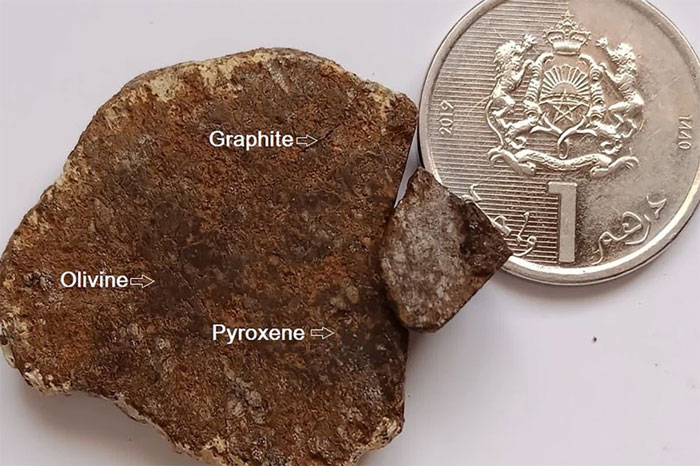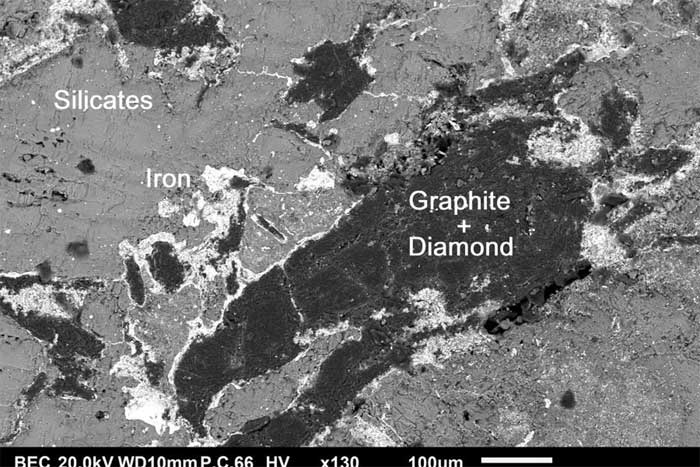Dr. Abderrahmane Ibhi, a meteorite expert and professor in the geology department at Agadir University, along with his Moroccan colleagues from the Meteorite Museum at Ibn Zohr University and Italian researchers from the Institute of Crystallography and the Plasma Science and Technology Institute, have announced a significant discovery of diamonds after examining a Ureilite specimen kept at the Rock Museum in Agadir.

The Rock Museum in Agadir houses specimens dating back to the Sun.
Ureilite is a rare type of meteorite, accounting for only 0.6% of all recorded meteorites that have fallen to Earth. The name of this meteorite is derived from the village of Urey in the Republic of Mordovia, Russia, where it was first discovered on September 4, 1886.
Ureilite is not only rare but also special, as most meteorites are fragments of asteroids, while Ureilite is a fragment of an actual planet, an ancient planet that formed nearly 4.6 billion years ago, around the same time as the Sun.

Cross-section of the Ureilite meteorite NWA 12606 © UMU.
Despite the many unknowns surrounding this rock and its parent planet, Professor Abderrahmane Ibhi and his Moroccan and Italian colleagues have refuted the notion that the diamonds formed while still on their parent planet in space. They support the hypothesis that the diamonds found were created when this planetary fragment collided with Earth.
The meteorite carrying these diamond fragments weighs 197 grams and was discovered in 2018, approximately 30 km southeast of Midelt, in the Draa Tafilalet region of Morocco. It has been housed at the Meteorite Museum of Ibn Zohr University for the past two years, awaiting research access.

Analysis image of Ureilite NWA 12606 showing the distribution of graphite and diamonds surrounded by silicates (Olivine and pyroxene). (Photo: MUM).
Professor Abderrahmane Ibhi commented: “When a meteorite falls to Earth, the heat and pressure from the impact can transform their carbon components (often graphite) into extremely hard diamonds.”
His analysis and that of his colleagues specifically indicate that pressures over 30 GPa and temperatures around 2000°C are sufficient to create large shock waves capable of transforming the graphite structure within the rock into diamonds, even into “chunks” of diamonds if the metallic component (including iron and nickel) is large enough and the impact lasts long enough, as was the case with the Ureilite meteorite discussed in this article.

Specimens at the Rock Museum in Agadir.
Meteorites are considered the “messengers” of the Solar System because they are not merely extraterrestrial specimens but also contain the history of humanity. The Meteorite Museum at Ibn Zohr University currently houses over 120 different meteorite specimens, established to preserve extraterrestrial objects for scientific research purposes.
Unfortunately, most Arabic-speaking countries do not often appreciate the scientific value of such rocks, and some of them even sell meteorites abroad for immediate profit instead of placing them in a museum and/or laboratory.


















































